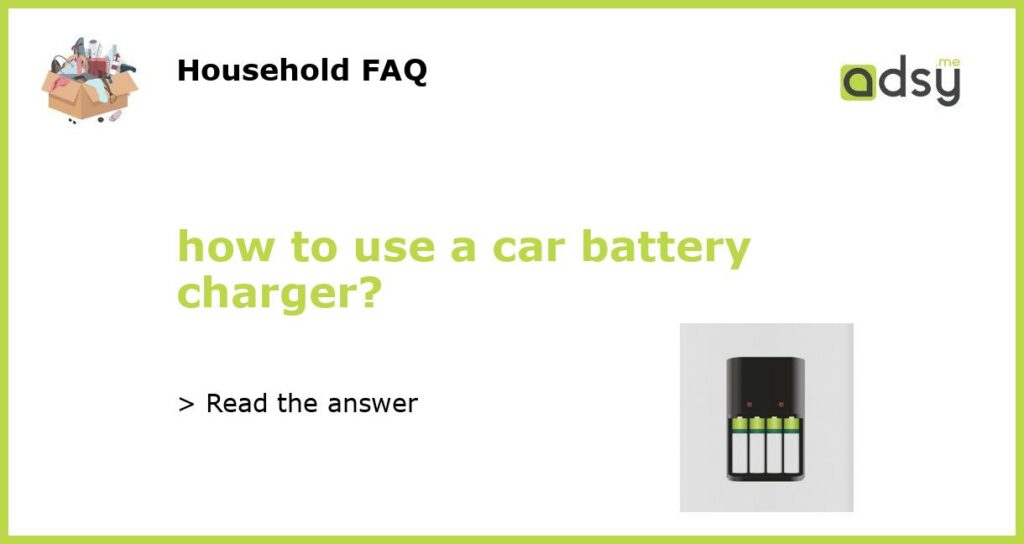Understanding How a Car Battery Charger Works
If you’re wondering how to use a car battery charger, first you need to understand how it works. A car battery charger is an essential tool for any driver, as it can help you jump-start a car or keep the battery charged when not in use. Basically, a charger converts AC power from an outlet into DC power that the car battery can use.
When the charger is plugged in, it sends a steady flow of electricity to the battery. A typical car battery needs around 12.6 volts to operate, and the charger will continue to charge the battery until it reaches this level. Most chargers come with basic safety features to prevent overcharging or damage to the battery, but it’s important to read the instructions carefully before use.
Preparing Your Car Battery for Charging
Before you start using a car battery charger, you need to make sure the battery is ready for charging. Start by turning off the ignition and removing the keys from the car. Open the hood and locate the battery, which is usually located near the front of the engine compartment.
Next, clean any dirt or debris off the battery terminals and check for signs of damage or corrosion. If the terminals are dirty or corroded, use a wire brush to clean them off. It’s important to wear gloves and goggles when working with car batteries, as they can produce hydrogen gas that is both flammable and hazardous to your health.
Connecting the Charger to Your Car Battery
Once you’ve prepared your car battery, you can connect the charger. Start by connecting the red or positive cable to the positive terminal on the battery, which is usually marked with a plus sign (+). Then, connect the black or negative cable to the negative terminal on the battery, which is usually marked with a minus sign (-).
Make sure the charger is set to the correct voltage for your car battery, which is typically around 12 volts for most vehicles. Some chargers also have a “fast charge” mode that can be used for a quick jump-start. Once you’re ready, plug in the charger and turn it on. The charger should start charging the battery immediately, and will usually display some type of indicator light or gauge to show its progress.
Monitoring the Charging Process
While the battery is charging, it’s important to monitor the process to make sure everything is working correctly. Check the charger periodically to make sure it’s still charging and the battery isn’t overheating. If you notice any signs of damage or overheating, stop the charging process immediately and unplug the charger.
Most chargers also come with safety features to prevent overcharging or damage to the battery, but it’s still important to keep an eye on things. Continue charging the battery until it reaches the appropriate voltage, then turn off the charger and disconnect it from the battery.
Using a car battery charger can be a simple and effective way to keep your car running smoothly. By understanding how it works and following the proper safety procedures, you can charge your car battery safely and effectively. If you’re unsure about how to use a car battery charger, don’t hesitate to check the manufacturer’s instructions or consult a professional for help.






